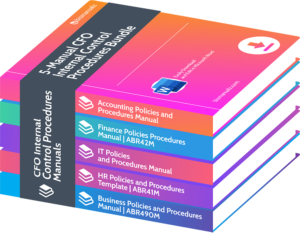What Should a CFO Know About Investment Portfolio Management?

Are you a budding CFO looking to manage your company’s investment portfolio? It’s crucial to understand the fundamentals of investment portfolio management to ensure financial success and stability. This article will discuss the important aspects of investment portfolio management, providing you with essential knowledge to make informed decisions for your organization’s financial future. What should a CFO know about investment portfolio management?
What is a CFO and What are Their Responsibilities?
A CFO, or Chief Financial Officer, is a top-level executive responsible for overseeing a company’s financial activities and making strategic financial decisions. Their duties include managing financial planning, budgeting, and reporting, as well as analyzing financial data and managing investments.
To excel in this role, a CFO must possess a thorough understanding of accounting principles, financial markets, and risk management. They collaborate with other executives to drive financial growth, ensure regulatory compliance, and increase shareholder value.
Additionally, a CFO plays a crucial role in developing financial strategies, optimizing cash flow, and providing accurate financial information to stakeholders. Aspiring CFOs should focus on gaining expertise in financial analysis, staying informed about industry trends, and cultivating strong leadership and communication skills.
Why is Investment Portfolio Management Important for a CFO?
Investment portfolio management is essential for a CFO as it enables them to make well-informed financial decisions, mitigate risks, and optimize returns. Through active management of the company’s investment portfolio, CFOs can ensure efficient allocation of funds while balancing risk and return. This allows them to maximize shareholder value and achieve financial objectives.
Moreover, effective portfolio management allows CFOs to monitor and evaluate investment performance, identify areas for improvement, and align investment strategies with the company’s overall financial goals. Ultimately, investment portfolio management plays a crucial role in the CFO’s ability to drive financial success and create long-term value for the organization.
What are the Key Elements of Investment Portfolio Management?
As a Chief Financial Officer (CFO), understanding the fundamentals of investment portfolio management is crucial in making informed financial decisions for a company. There are several key elements that make up this practice, each playing a vital role in the success of an investment portfolio.
In this section, we will delve into the four main components of investment portfolio management: asset allocation, diversification, risk management, and performance monitoring. By understanding these elements, a CFO can effectively manage and maximize the returns of their company’s investment portfolio.
1. Asset Allocation
Asset allocation is a crucial aspect of managing an investment portfolio. It involves dividing investments across different asset classes to achieve a balance between risk and return. Here are the steps to follow for effective asset allocation:
- Evaluate financial goals and risk tolerance.
- Understand the characteristics and historical performance of various asset classes.
- Identify the appropriate allocation percentages for each asset class based on goals and risk tolerance.
- Select specific investments within each asset class that align with the desired allocation.
- Regularly review and rebalance the portfolio to maintain the desired asset allocation.
2. Diversification
Diversification is a crucial element of managing an investment portfolio as it helps to reduce risk and optimize returns. Here are the necessary steps to achieve diversification:
- Identify different asset classes, such as stocks, bonds, and real estate.
- Allocate funds across these asset classes based on your risk tolerance and investment goals.
- Distribute investments within each asset class, considering factors like industry, geography, and company size.
- Regularly review and rebalance the portfolio to maintain the desired level of diversification.
Fact: Diversification is an effective way to protect your portfolio from significant losses by spreading risk across various investments.
3. Risk Management
Risk management is an essential aspect of investment portfolio management for CFOs. Here are key steps to effectively manage risks in an investment portfolio:
- Identify and assess potential risks: Analyze potential risks associated with different investments and determine their potential impact.
- Diversify investments: Spread investments across various asset classes and sectors to reduce the risk of significant losses.
- Set a risk tolerance level: Establish the level of risk the portfolio can bear based on the organization’s goals and risk appetite.
- Implement risk mitigation strategies: Utilize hedging techniques, such as options or futures, to minimize potential losses.
- Regularly monitor and review the portfolio: Continuously assess the portfolio’s performance and make necessary adjustments to effectively manage risks.
4. Performance Monitoring
Performance monitoring is an essential aspect of investment portfolio management for CFOs. It involves regularly tracking and evaluating the portfolio’s performance to ensure it remains in line with the established investment objectives. Here are the steps involved in effectively monitoring performance:
- Evaluate the performance of each individual investment.
- Compare the performance of investments against industry standards or benchmarks.
- Assess the overall performance of the portfolio and make necessary adjustments to allocations.
- Review risk levels and modify strategies as needed.
- Monitor the fees and expenses associated with the portfolio.
In 2008, during the global financial crisis, CFOs who diligently monitored their investment portfolios were able to identify risks early on and make timely adjustments. This proactive approach helped protect their companies’ assets and mitigate potential losses, highlighting the importance of performance monitoring in effective investment portfolio management.
What are the Different Types of Investment Portfolios?
Investment portfolio management is a crucial aspect of a CFO’s role, as it involves making strategic decisions about the company’s assets and investments. In this section, we will discuss the various types of investment portfolios that a CFO should be familiar with.
We will explore the differences between passive and active portfolios, as well as equity and fixed income portfolios. Additionally, we will examine the distinctions between domestic and international portfolios, and how these can impact a company’s overall investment strategy.
1. Passive vs Active Portfolios
Passive and active portfolios are two distinct investment strategies with their own unique characteristics and benefits.
- Passive Portfolios: These portfolios aim to mirror the performance of a specific market index, such as the S&P 500. Steps to construct a passive portfolio include:
- Selecting low-cost index funds or exchange-traded funds (ETFs) that track the chosen index.
- Allocating assets based on the index’s composition.
- Periodically rebalancing to maintain the desired asset allocation.
- Active Portfolios: These portfolios involve actively managing investments to outperform the market. Steps to build an active portfolio include:
- Conducting thorough research and analysis to identify undervalued securities.
- Constructing a diverse portfolio of carefully selected stocks, bonds, or other investments.
- Regularly monitoring the portfolio and making adjustments based on market conditions and investment opportunities.
When deciding between passive and active portfolios, CFOs should consider their risk tolerance, investment objectives, and market conditions.
Suggestions for effective portfolio management:
- Diversify across asset classes and sectors.
- Regularly review and adjust the portfolio to ensure alignment with investment goals.
- Seek professional advice or consult with a financial advisor for personalized guidance.
2. Equity vs Fixed Income Portfolios
Equity and fixed income portfolios are two distinct investment strategies with their own unique characteristics.
- Equity Portfolio: This type of portfolio primarily consists of stocks or shares in companies. It offers the potential for higher returns but also comes with greater risk due to market volatility.
- Fixed Income Portfolio: This portfolio mainly comprises bonds or other fixed income securities. It provides a steady stream of income through interest payments and is generally considered less risky than equity portfolios.
When making investment decisions, CFOs must carefully consider their risk tolerance, investment goals, and market conditions to determine which portfolio best aligns with their company’s financial objectives.
Pro-tip: Diversifying across both equity and fixed income portfolios can help CFOs balance risk and potentially enhance long-term returns.
3. Domestic vs International Portfolios
When constructing an investment portfolio, it is essential to consider the allocation between domestic and international investments. Here are some steps to help navigate this decision:
- Assess your risk tolerance and investment goals.
- Evaluate the economic and political stability of both domestic and international markets.
- Research the performance and potential of various domestic and international asset classes.
- Diversify your portfolio by including a mix of both domestic and international investments, keeping in mind the risks and potential growth in each market.
- Regularly monitor and evaluate the performance of your domestic and international holdings to ensure they align with your risk tolerance and objectives.
Remember, while international investments can offer diversification and growth potential, they also carry additional risks. It’s important to strike a balance between domestic and international investments that aligns with your risk tolerance and objectives.
What are the Best Practices for Investment Portfolio Management?
As a Chief Financial Officer (CFO), managing an investment portfolio is a crucial responsibility. To ensure the success of this task, it is important to implement best practices in investment portfolio management.
In this section, we will discuss the key components of effective portfolio management, including establishing clear investment objectives, conducting thorough research and due diligence, regularly rebalancing the portfolio, and continuously monitoring and evaluating performance. By following these best practices, a CFO can make informed decisions and maximize returns for their organization’s investment portfolio.
1. Establishing Clear Investment Objectives
Establishing clear investment objectives is crucial for effective portfolio management. Here are the steps to establish clear investment objectives:
- Define your financial goals: Determine whether you are investing for long-term growth, income generation, or capital preservation.
- Assess risk tolerance: Evaluate your comfort level with risk and volatility to determine the appropriate asset allocation.
- Establish a time horizon: Determine how long you plan to invest and when you will need access to your funds.
- Consider liquidity needs: Assess how easily you need to access your investments and ensure you have enough liquidity for emergencies.
- Set realistic expectations: Establish achievable returns based on historical performance and market conditions.
By following these steps, a CFO can establish clear investment objectives that align with their organization’s financial goals.
2. Conducting Thorough Research and Due Diligence
Conducting thorough research and due diligence is essential for successful investment portfolio management. Here are some steps to follow:
- Define your investment goals and risk tolerance.
- Gather information on potential investments, such as company financials and industry trends.
- Analyze the data to assess the investment’s potential risks and rewards.
- Verify the credibility and reputation of the investment provider.
- Consider the investment’s fit within your existing portfolio.
- Perform a cost-benefit analysis to determine if the investment aligns with your financial objectives.
Remember to stay updated on market conditions and seek professional advice when needed. Thorough research and due diligence can help minimize risks and maximize returns in investment portfolio management.
3. Regularly Rebalancing the Portfolio
- Consistently review the portfolio: Regularly assess the performance of each investment to identify any significant changes or deviations from the desired asset allocation.
- Set predetermined thresholds for rebalancing: Determine specific thresholds for each asset class or investment that signal the need for rebalancing.
- Identify underperforming assets: Identify investments that have underperformed or deviated significantly from the desired allocation.
- Buy or sell assets: Purchase or sell assets to restore the original asset allocation by adjusting the holdings of certain investments.
- Consider potential tax implications: Take into consideration any potential tax implications before making adjustments to the portfolio.
- Monitor and make adjustments: Continuously monitor the portfolio and make necessary adjustments based on market conditions or investment goals.
In a similar story, the importance of regular rebalancing is highlighted. In 2008, during the financial crisis, many investors who neglected to rebalance their portfolios suffered significant losses as certain asset classes plummeted in value.
Rebalancing would have helped mitigate these losses by reallocating investments to more stable assets. Regularly rebalancing is crucial for maintaining a well-diversified and optimized investment portfolio.
4. Continuously Monitoring and Evaluating Performance
To ensure the effectiveness of an investment portfolio, it is crucial for a CFO to continuously monitor and evaluate its performance. This can be achieved through a systematic approach that includes the following steps:
- Establishing Key Performance Indicators (KPIs) that align with the portfolio’s objectives.
- Regularly reviewing and assessing the portfolio’s performance against the set KPIs.
- Analyzing the portfolio’s returns and comparing them to relevant benchmarks or industry standards.
- Identifying any underperforming assets or sectors and determining the reasons behind their performance.
- Making informed decisions to optimize the portfolio by reallocating or divesting underperforming assets.
- Continuously monitoring the portfolio’s performance to ensure it remains aligned with the CFO’s goals and market conditions.
By following these steps, a CFO can proactively manage the portfolio’s performance and make necessary adjustments to enhance its overall profitability and mitigate risks.
What are the Common Mistakes to Avoid in Investment Portfolio Management?
As a CFO, managing investment portfolios is a crucial aspect of your role. However, even the most experienced CFOs can make mistakes when it comes to portfolio management. In this section, we will discuss the common mistakes that CFOs should avoid in investment portfolio management.
From overlooking risk tolerance to neglecting the importance of diversification, these errors can have significant consequences for the overall success of your portfolio. By understanding these mistakes, you can take proactive steps to prevent them and ensure the long-term growth and stability of your investments.
1. Not Considering Risk Tolerance
Not taking into account risk tolerance when managing an investment portfolio can have negative consequences. To avoid this mistake, follow these steps:
- Evaluate your risk tolerance: Evaluate your ability and willingness to handle investment risks.
- Set investment objectives: Define your financial goals and align them with your risk tolerance.
- Diversify your investments: Spread your investments across various asset classes to minimize risk.
- Regularly review and adjust: Monitor your portfolio and make necessary changes based on changes in your risk tolerance or market conditions.
One notable example of not considering risk tolerance occurred during the dot-com bubble in the late 1990s. Many investors disregarded their risk tolerance and invested heavily in high-flying tech stocks. When the bubble burst in 2000, those who failed to consider risk tolerance experienced significant losses. This serves as a reminder of the importance of assessing risk tolerance when managing an investment portfolio.
2. Focusing Too Much on Short-term Gains
One common mistake in investment portfolio management is placing too much emphasis on short-term gains. Although it may be tempting to prioritize quick profits, this approach can ultimately lead to increased risk and potential losses.
Instead, CFOs should take a long-term perspective, considering the overall financial goals and objectives of the organization. By prioritizing a well-diversified portfolio and conducting thorough research and due diligence, CFOs can make informed investment decisions that align with the company’s long-term growth strategy.
Regularly monitoring and evaluating the performance of investments is also crucial to ensure they remain on track. By resisting the allure of short-term gains, CFOs can cultivate a successful investment portfolio that delivers sustainable returns.
3. Ignoring Diversification
Ignoring diversification in investment portfolio management can have detrimental effects on a CFO’s financial strategy. To avoid this mistake, follow these steps:
- Assess Risk Tolerance: Determine your organization’s risk tolerance and understand how diversification can help mitigate risks.
- Understand Asset Correlation: Analyze the correlation between different assets to identify opportunities for diversification.
- Create a Balanced Portfolio: Allocate investments across various asset classes, such as stocks, bonds, and real estate, to spread risk.
- Consider Geographic Diversification: Invest in different regions and economies to reduce exposure to any one market’s volatility.
By following these steps and not ignoring diversification, CFOs can effectively manage investment portfolios and minimize the impact of market fluctuations.
4. Not Rebalancing the Portfolio
Failure to regularly rebalance the investment portfolio can have negative consequences for a CFO. To avoid this, here are steps to ensure proper portfolio rebalancing:
- Set a target asset allocation by determining the desired allocation percentages for different asset classes.
- Monitor the portfolio regularly by reviewing the performance of each asset class.
- Identify the asset classes that have deviated significantly from their target allocation.
- Sell assets that have exceeded the target allocation and buy assets that are underrepresented.
- Execute the trades needed to bring the portfolio back to its target allocation.
- Rebalance periodically, whether quarterly, semi-annually, or annually, depending on the investment strategy.
By following these steps, a CFO can avoid the negative consequences of not rebalancing the portfolio and maintain a well-diversified investment portfolio.
Frequently Asked Questions

What is investment portfolio management and why is it important for a CFO to know?
Investment portfolio management is the process of managing a company’s investment portfolio to achieve maximum returns while mitigating risk. It is important for a CFO to understand this concept as it directly impacts the financial health and success of the company.
What are the key responsibilities of a CFO when it comes to investment portfolio management?
The key responsibilities of a CFO in investment portfolio management include setting investment goals, determining risk tolerance, selecting appropriate investments, monitoring performance, and making strategic adjustments to the portfolio.
What are some common investment strategies that a CFO should be familiar with?
Some common investment strategies that a CFO should know about include diversification, asset allocation, active vs. passive investment, and dollar-cost averaging. Each strategy has its own advantages and risks, and a CFO should have a thorough understanding of these to make informed decisions for the company’s portfolio.
How can a CFO ensure the investment portfolio is aligned with the company’s overall goals and objectives?
A CFO should work closely with the company’s leadership team to understand the organization’s goals and objectives. They should then use this information to make investment decisions that align with the company’s overall strategy and financial objectives.
What role does risk management play in investment portfolio management for a CFO?
Risk management is a crucial aspect of investment portfolio management for a CFO. They must assess the potential risks associated with each investment and implement measures to mitigate and manage these risks. This helps protect the company’s financial assets and ensures a more stable and successful investment portfolio.
How can a CFO measure the success of their investment portfolio management decisions?
A CFO can measure the success of their investment portfolio management decisions by regularly reviewing and analyzing key performance indicators such as return on investment, portfolio diversification, risk-adjusted returns, and portfolio turnover. These metrics can help them make informed decisions and adjust their strategies accordingly to achieve their investment goals.
















Leave a Reply